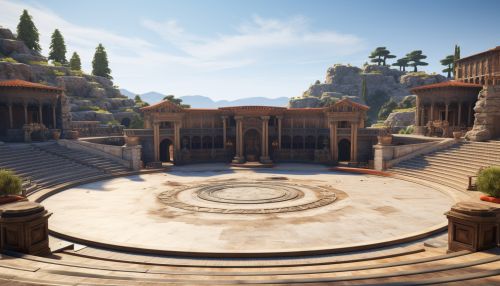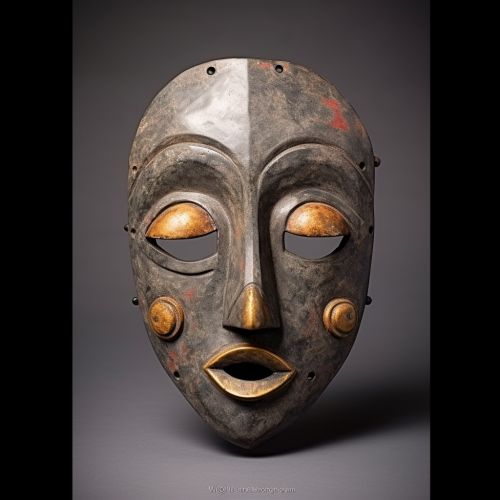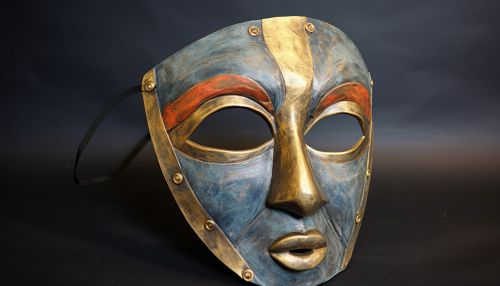Greek chorus
Origins and Development
The Greek chorus, a fundamental element of ancient Greek theatre, originated in the 6th century BCE during the reign of the Athenian tyrant Peisistratus. The chorus was an integral part of the performance, providing a variety of roles within the dramatic presentation. It was a group of actors who commented on the action, provided exposition, sang and danced, and interacted with the main characters while remaining separate from the main action of the play.


The Greek chorus was initially composed of fifty members, but this number was reduced to twelve by Sophocles, and later increased to fifteen by Aeschylus. The chorus was usually homogeneous, consisting of men or women, elders or youths, citizens or foreigners, depending on the requirements of the play. They were dressed in uniform costumes, and their movements were choreographed in a form of dance known as the choral dance.
Function and Role
The Greek chorus served multiple functions within the dramatic structure of the play. They provided a collective voice, representing the societal norms and values of the time. They also served as a bridge between the audience and the actors, interpreting and commenting on the action. The chorus could also provide additional information about the plot, characters, and setting, which was not conveyed through the dialogue of the main characters.
The chorus often expressed the moral and social themes of the play, and their reactions could guide the audience's response to the drama. They could also create dramatic irony, expressing views contrary to the actual situation in the play, thus enhancing the tragic effect.
Influence on Modern Theatre
The influence of the Greek chorus can be seen in various forms of modern theatre. In musical theatre, for example, the ensemble often serves a similar function, providing commentary, singing, and dancing. In contemporary drama, playwrights have used the concept of the chorus to create a collective voice or to represent a particular social group or viewpoint.
See Also


Further Reading
For those interested in delving deeper into the subject of the Greek chorus, the following resources are recommended:
- "The Greek Chorus: An Overview" by John H. Starks Jr.
- "The Role of the Chorus in Greek Tragedy" by R. G. A. Buxton
- "The Greek Chorus in Action" by W. B. Stanford
- "The Chorus in Greek Drama and its Role in Modern Theatre" by Stephen Esposito
References
1. "The Greek Chorus: An Overview" by John H. Starks Jr. 2. "The Role of the Chorus in Greek Tragedy" by R. G. A. Buxton 3. "The Greek Chorus in Action" by W. B. Stanford 4. "The Chorus in Greek Drama and its Role in Modern Theatre" by Stephen Esposito
